Gym Floor Plan Template (FREE PDF)
Use this free gym floor plan template PDF to decide which gym floor plan is best for your gym, and spell out detailed instructions for a commercial gym floor plan.

Designing an effective gym floor plan is a critical step when planning to open a gym. The layout of the facility can significantly impact user experience, operational flow, and member retention. A well-thought-out gym floor plan layout maximizes space, enhances safety, and creates an inviting environment for members. For gym owners who want to visualize their space without complex tools, a Gym Floor Plan Template PDF or Gym Floor Plan Template Word is an excellent starting point. Exercise.com, while known as the best gym management software for running your gym, complements these planning tools by streamlining operations and supporting day-to-day management once your facility is up and running. Get a free gym design layout floor plan template PDF along with other free fitness templates.
Creating a gym design floor plan template can help you visualize equipment placement, walkways, and workout zones, ensuring that each section serves its purpose efficiently. Whether you’re looking at a commercial gym floor plan, a modern gym floor plan, or a small gym floor plan with dimensions, having a template like a gym floor plan template free download can simplify the process. These gym design templates allow gym owners to experiment with different layouts and find the best use of space, whether you’re planning a boxing gym floor plan, CrossFit gym floor plan, or a fitness center gym floor plan. Be sure to check out our guide on how much space is needed for a commercial gym, commercial gym layout ideas, commercial gym flooring ideas, commercial gym lighting ideas, what gym equipment is needed to start a gym, and more to get more gym design guidance.
For those exploring advanced planning, options like a free gym layout planner or a gym floor plan creator can offer additional customization. While gym design software free and gym layout planners can assist with visualization, Exercise.com ensures that once your gym is designed and operational, you have the tools needed to manage memberships, bookings, payments, and more. This integrated approach saves time and reduces the overall cost to open a gym by improving efficiency and organization.

Templates such as the gym floor plan with dimensions or gym floor plan template free make it easier to create a simple gym floor plan or a fitness room plan with precision. For more specialized designs, templates for gym equipment floor plans, gym shower plans, and gym blueprints offer detailed planning for various areas within the gym. Exercise.com’s role as the best gym management software ensures that after your gym is designed with the help of a gym floor layout template or gym blueprint, your operations will be seamless and member-focused, providing a strong foundation for long-term success.
Learning how to make a gym floor plan is key for making your gym stand out—and in a good way, not a bad way! A well-designed gym floor plan is essential for success and a key part of a fulsome gym design strategy and understanding the best commercial gym layouts.
Whether you’re a seasoned gym owner or just starting out in the industry, having a solid plan in place can make all the difference in attracting more gym members and retaining gym members. A gym floor plan template is a valuable tool that can help guide your decision-making process and ensure that your gym’s layout is optimized for functionality, efficiency, and safety.

So if you’re looking to design the perfect gym floor plan, then this article provides a comprehensive gym floor plan template to help you create a functional and efficient layout for your fitness facility. Read on to get gym floor plan inspiration with this commercial gym floor plan template and then check out our list of gym design ideas to get started learning how to open a gym, how much a new gym costs, how much it costs to build a gym from the ground up, and how to increase gym revenue and profit.
Then be sure to check out the best gym management software software system, best personal training software, best online fitness coaching software, and more—all in one unified platform to run your entire fitness business in one place. See how Exercise.com can help you run your gym business to increase gym profit.

And as our reviews from gym owners attest, we love gym owners and they love us. Read our gym owner guide and then see why our gym software has gym owners raving (get a free demo here).
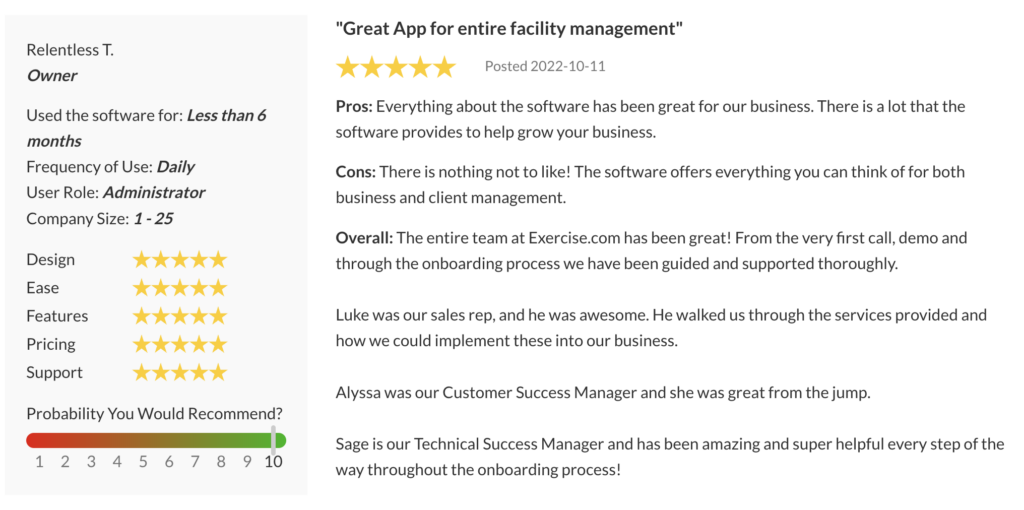
Gym check-in software that makes your life easy. (Read More: Best Gym Check-In Software)
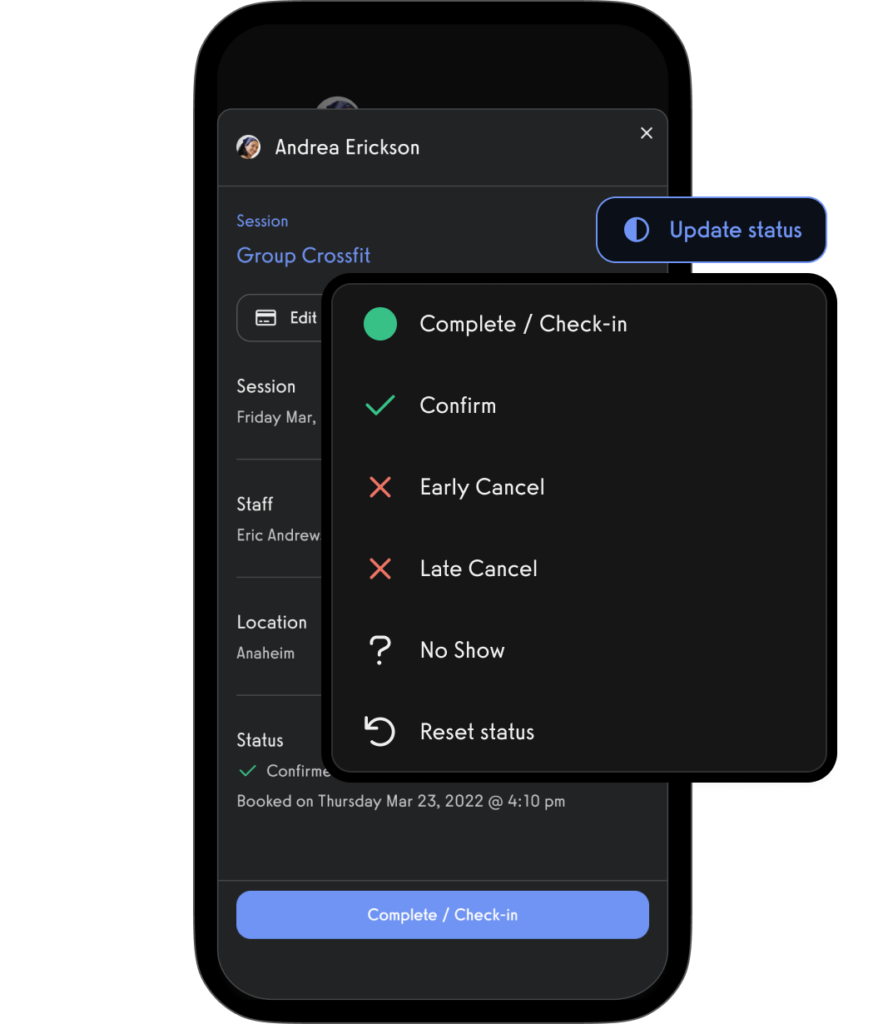
Communicate with gym members, athletes, team members, personal training clients, class members, parents, and dependents via SMS, email, and in-app push notification.
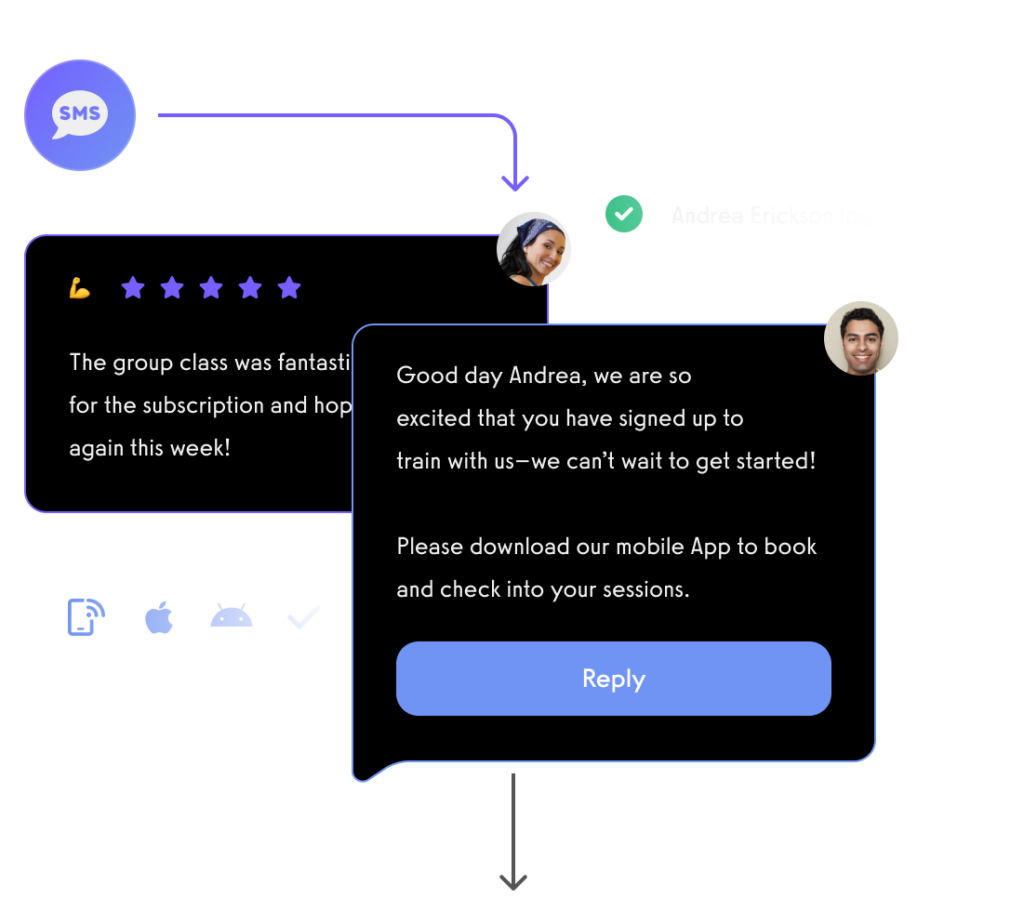
And of course, view all of your gym business reports easily too.
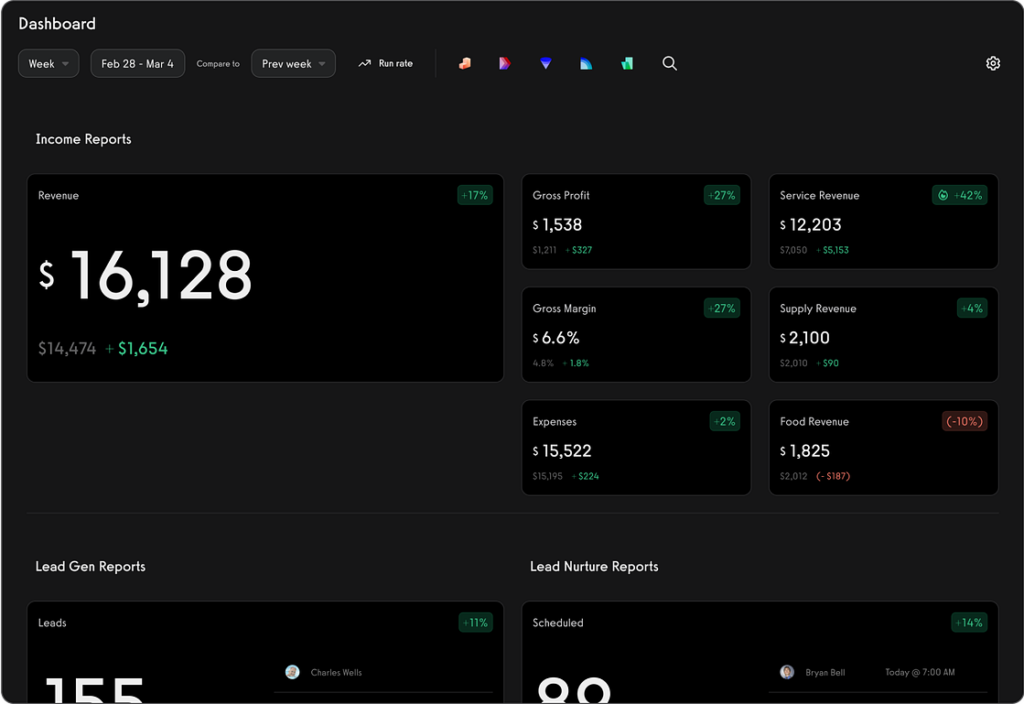
All from your custom-branded fitness apps (Read More: Best Gym Mobile Fitness Apps Software)


Gym Floor Plan Template

[Your Gym or Fitness Center Logo]
Gym Layout and Floor Plan
Facility: [Your Gym/Fitness Center Name]
Floor Plan Creation Date: [Date]
Created by: [Your Name or Designer’s Name]
1. Reception and Entrance Area
- Location: Front and center upon entering the gym.
- Elements Included: Reception desk, seating area, membership and sales information.
- Notes: Designed to be welcoming and provide a clear view of the entire gym.
2. Cardio Zone
- Location: [Specify location, e.g., Right side of the gym]
- Equipment Included: Treadmills, ellipticals, stationary bikes, rowing machines.
- Layout Notes: Spacious aisles for easy access, positioned to have a view of TVs or outside.
3. Strength Training Area
- Free Weights Section
- Location: [Specify location]
- Equipment: Dumbbells, barbells, benches, squat racks.
- Layout Notes: Ample space between equipment for safety.
- Machine Weights Section
- Location: [Specify location]
- Equipment: Cable machines, leg press, chest press, etc.
- Layout Notes: Organized by muscle group for easy navigation.
4. Functional Training and Stretching Area
- Location: [Specify location]
- Equipment: Yoga mats, medicine balls, kettlebells, resistance bands.
- Layout Notes: Open floor area for group classes or individual workouts.
5. Group Fitness Studio
- Location: [Specify location, possibly separate room]
- Features: Mirrored walls, sound system, storage for class equipment.
- Class Types: Yoga, Pilates, spin classes, aerobics.
6. Locker Rooms and Restrooms
- Location: [Specify location, e.g., back of the gym]
- Facilities: Lockers, showers, restrooms, changing area.
- Layout Notes: Ensure privacy and ease of flow.
7. Additional Amenities (If applicable)
- Sauna/Steam Room
- Location: [Specify location]
- Massage/Physical Therapy Room
- Location: [Specify location]
- Juice Bar/Café
- Location: [Near entrance/exit]
8. Emergency Exits and Safety Equipment
- Location: Clearly marked exits, fire extinguishers, first aid kits.
- Layout Notes: Ensure unobstructed pathways to exits.
Floor Plan Diagram
[Insert Floor Plan Graphic or Diagram Here]
Notes:
[Additional notes about gym layout, future expansion plans, etc.]
Approval:
Approved by: [Approver’s Name] Date: [Approval Date]
[Your Gym/Fitness Center Contact Information]
Address: [Gym Address]
Phone: [Contact Number]
Email: [Email Address]
This Gym Floor Plan Template serves as a guide for creating a well-organized, functional, and safe layout for a fitness facility. It can be customized to reflect the unique brand, services, and spatial dynamics of your gym or fitness center.
Sources:
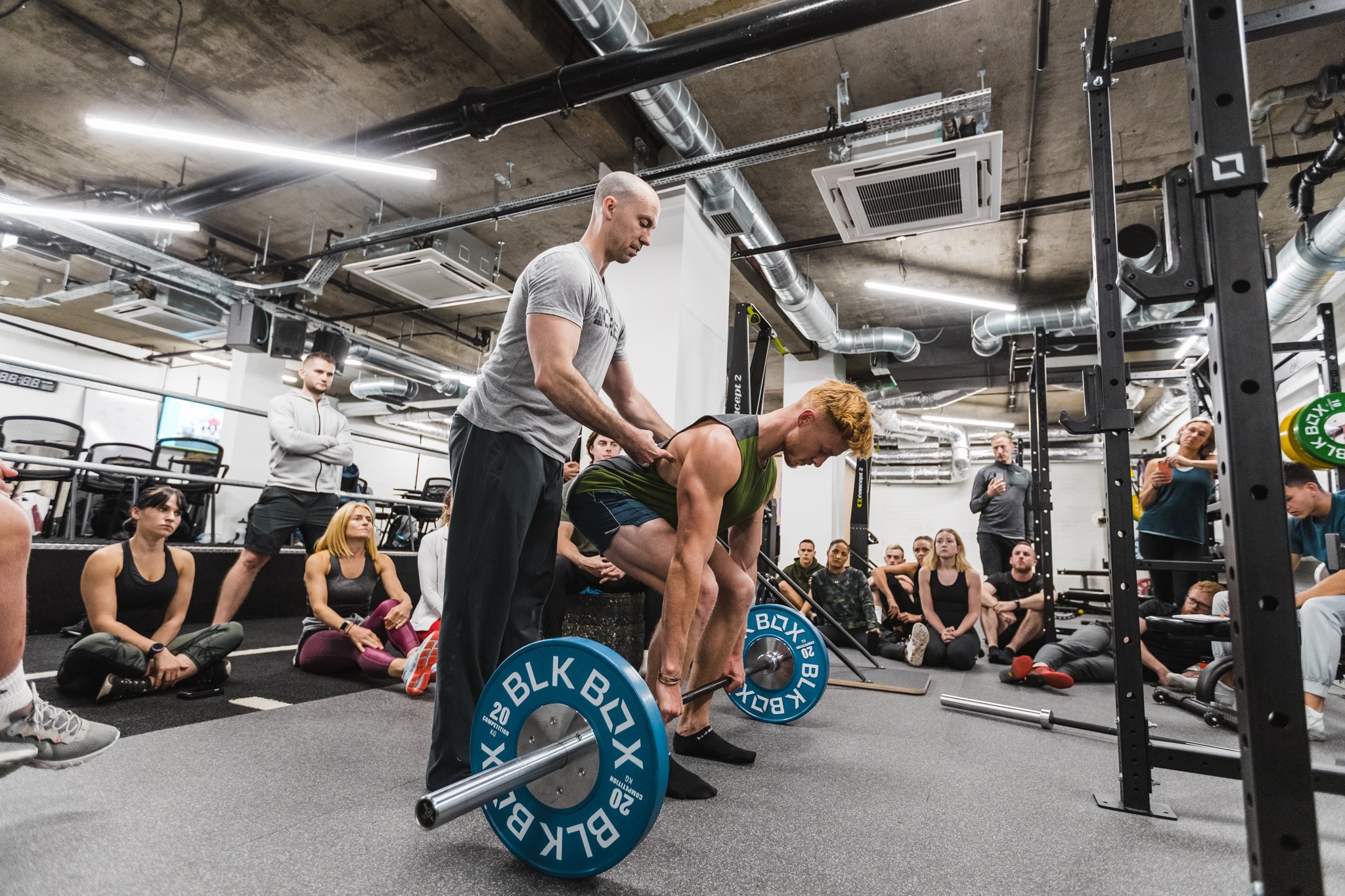
Why You Need a Gym Floor Plan Template
So, why exactly do you need a gym floor plan template? Think of it as the blueprint for your fitness business. Just as a professional architect would not start building a structure without first creating a detailed plan, you should not embark on designing your gym layout without a clear vision in mind. A gym floor plan template acts as a visual guide for your entire facility, outlining the different areas and equipment placement, as well as the flow of traffic and overall design aesthetic. It allows you to envision the space before it’s even built, making it easier to make informed decisions and avoid costly mistakes down the line.
The Importance of a Well-Designed Gym Floor Plan
A well-designed gym floor plan is the foundation upon which your fitness business thrives. It sets the stage for a positive member experience and ensures that your facility operates smoothly and efficiently. One of the key benefits of a well-designed gym floor plan is maximizing the use of available space. Whether you have a large or small facility, an effective layout can make all the difference in creating a spacious and inviting atmosphere. Additionally, a well-thought-out gym floor plan ensures easy navigation for members, guiding them seamlessly through various workout zones and amenities.
Furthermore, a well-designed gym floor plan takes into account the safety of your members and staff. It allows for clear pathways and emergency exits, as well as proper placement of safety equipment. By considering these factors in your design, you can create a secure and risk-free environment for everyone who steps foot in your gym.
Key Elements to Include in Your Gym Floor Plan Template
When creating your gym floor plan template, there are a few key elements that you must include to ensure a comprehensive and effective layout. Firstly, consider the different workout areas you want to offer in your gym. This may include cardio zones, weightlifting areas, group exercise spaces, and functional training zones. Each area should be clearly defined and strategically located within your facility.
In addition to workout areas, your gym floor plan template should also incorporate amenities such as locker rooms, showers, and reception areas. These spaces not only cater to the practical needs of your members but also contribute to the overall experience they have at your gym. Don’t forget to allocate space for equipment storage, maintenance rooms, and staff offices as well, as these areas are crucial for the smooth operation of your business.
Creating an Effective Layout for Your Gym Floor Plan
The layout of your gym floor plan is critical in ensuring a seamless flow of traffic and maximizing space efficiency. First and foremost, consider the natural traffic patterns within your space. How will members move from one area to another? Will there be any bottlenecks or areas prone to congestion? By understanding these patterns, you can strategically position equipment and design pathways that minimize disruption and facilitate easy movement.
When placing equipment in your gym floor plan, it’s essential to consider both functionality and aesthetics. Group similar pieces of equipment together to create distinct workout zones, making it easier for members to navigate the space and find the equipment they need. Additionally, pay attention to the placement of mirrors, windows, and other design elements that can enhance the overall ambiance of your gym.
Tips for Designing a Functional Gym Floor Plan Template
Designing a functional gym floor plan template takes careful consideration and planning. Here are a few practical tips to keep in mind:
1. Assess your target demographic: Consider the specific needs and preferences of your target demographic when designing your gym floor plan. For example, if you’re catering to a more mature clientele, ensure that you provide ample space for stretching and mobility exercises.
2. Seek expert advice: Don’t be afraid to consult with fitness facility design experts or other gym owners who have successfully implemented effective floor plans. Their insights and experiences can provide valuable guidance for creating your own template.
3. Test the layout: Before finalizing your gym floor plan template, conduct a “walkthrough” of the space to test its functionality. Visualize yourself as a member navigating through the different areas and assess if any adjustments need to be made.
4. Consider future expansion: While your current gym floor plan may be perfect for your current needs, it’s essential to plan for future growth and expansion. Leave room for adding new equipment or incorporating additional workout areas as your business evolves.
Maximizing Space Efficiency in Your Gym Floor Plan
Space efficiency is a crucial aspect of any gym floor plan. Whether you have a large or limited area, maximizing space will allow you to accommodate more members and offer a variety of workout options. Here are a few strategies to help you make the most of the available space:
1. Multi-functional equipment: Opt for equipment that serves multiple purposes. For example, an adjustable bench can be used for various exercises, saving space by replacing the need for multiple specialized benches.
2. Utilize vertical space: Don’t forget to make use of vertical space in your gym. Install wall-mounted storage units or racks to store equipment or implement suspended training systems to make the most of the available square footage.
3. Opt for compact equipment: When selecting equipment for your gym, consider compact options that take up less space. From folding treadmills to adjustable dumbbell sets, there are plenty of space-saving solutions available.
Choosing the Right Equipment Placement in Your Gym Floor Plan Template
The placement of equipment plays a significant role in the functionality and flow of your gym. When deciding where to position each piece, consider factors such as accessibility, safety, and usability. Here are some guidelines to help you choose the right equipment placement:
1. Leave adequate clearance: Ensure that there is enough space around each equipment to allow for safe and comfortable usage. Members should be able to move freely without feeling cramped or restricted.
2. Consider equipment durability and maintenance: If certain pieces of equipment require regular maintenance or repair, allocate space nearby for easy access. This will help ensure efficient upkeep and minimize downtime.
3. Cluster equipment by workout zones: Group similar equipment together to create distinct workout zones. This will make it easier for members to navigate the space and locate the equipment they need for their specific workout.
Incorporating Safety Measures in Your Gym Floor Plan Design
One of the paramount considerations when designing your gym floor plan is the safety of your members and staff. A well-designed gym floor plan takes into account potential hazards and implements safety measures to prevent accidents or injuries. Here are some areas to focus on when incorporating safety measures:
1. Clear pathways: Ensure that there are clear pathways throughout your gym, free from any obstructions or hazards. This will prevent accidents and allow members and staff to move easily between different areas.
2. Emergency exits and first aid stations: Place emergency exits and first aid stations in easily accessible locations. Properly mark these areas to ensure that they are visible to all and that members can quickly locate them in case of an emergency.
3. Proper equipment spacing: Avoid clustering equipment too closely together, as it can increase the risk of accidents. Leave adequate spacing between each piece of equipment to allow for safe usage and free movement.
Customizing Your Gym Floor Plan to Suit Your Fitness Business Needs
Every fitness business is unique, and your gym floor plan should reflect the specific needs and goals of your facility. By customizing your template, you can create a gym design that aligns with your brand identity and enhances your members’ experience. Here are some considerations to help you customize your gym floor plan:
1. Branding and aesthetics: Incorporate your brand’s colors, logo, and overall aesthetic into the design of your gym. Create an ambiance that reflects your brand identity and fosters a sense of belonging for your members.
2. Amenities and additional services: Consider what additional amenities or services you want to offer in your gym. Whether it’s a juice bar, massage room, or personalized training area, make sure to allocate space for these additional offerings.
3. Member feedback: Don’t forget to seek feedback from your members. Ask for their input on the gym layout and take their suggestions into consideration when customizing your floor plan. This will not only make your members feel valued but also help you create a space that meets their needs and desires.
How to Optimize Traffic Flow in Your Gym Floor Plan Template
The flow of traffic in your gym can greatly impact the overall member experience. A well-optimized traffic flow ensures that members can move easily between different workout areas without any bottlenecks or congestion. Here are some strategies to help you optimize traffic flow:
1. Create clear pathways: Designate clear pathways that guide members through your gym, ensuring that there are no dead ends or confusing routes. Consider placing signage and floor markings to assist members in navigating the space.
2. Separate cardio and weightlifting areas: Cardio and weightlifting areas tend to attract different types of members. To prevent congestion, separate these zones and create clear paths between them, allowing members to transition between workouts with ease.
3. Consider one-way traffic: In areas with heavy traffic, consider implementing a one-way traffic system. This can help prevent congestion and ensure a smoother flow of members moving through the space.
Planning for Future Expansion with a Flexible Gym Floor Plan Design
As a fitness business owner, it’s crucial to plan for the future. While your current gym floor plan may perfectly meet your needs at present, it’s essential to consider potential future expansion. By designing a flexible gym floor plan, you can easily accommodate growth and adapt to changing trends or member demands. Here are some strategies for planning for future expansion:
1. Leave room for growth: Allocate space in your design that can be repurposed or expanded upon as your business grows. Consider areas that can be easily modified, such as walls that can be relocated or multipurpose spaces that can be adapted to new uses.
2. Evaluate equipment scalability: Choose equipment that can be easily upgraded or replaced as your business expands. Ensuring that your gym can accommodate new and improved equipment will help keep your facility competitive and up-to-date with industry trends.
3. Keep up with industry trends: Stay informed about the latest trends and innovations in the fitness industry. By incorporating these trends into your gym floor plan, you can attract new members and position your business as a leader in the industry.
Balancing Aesthetics and Functionality in Your Gym Floor Plan Layout
When designing your gym floor plan, it’s important to strike a balance between aesthetics and functionality. While a visually appealing gym can attract attention, it’s equally important to ensure that the space is practical and serves the needs of your members. Here are some considerations for achieving this balance:
1. Choose a cohesive design theme: Select a design theme that aligns with your brand and appeals to your target demographic. Whether it’s a sleek modern look or a warm and welcoming ambiance, ensure that the design elements work together to create a cohesive and inviting atmosphere.
2. Prioritize functionality: While aesthetics are important, always make sure that functionality remains a top priority. Ensure that the gym layout allows for efficient movement, easy access to equipment, and clear sightlines for both members and staff.
3. Seek professional advice: If you are unsure about implementing both aesthetics and functionality, consider consulting with an interior designer or gym design specialist. These professionals can help you create a visually stunning gym layout that does not compromise on its practicality.
Utilizing Technology and Smart Features in Your Gym Floor Plan Template
In today’s digital world, technology plays an increasingly significant role in the fitness industry. Integrating technology into your gym floor plan can enhance the member experience, streamline operations, and set your facility apart from the competition. Consider incorporating the following technology and smart features into your gym:
1. Interactive workout screens: Install interactive screens that provide workout guidance, tips, and feedback. These screens can be connected to various workout stations, allowing members to track their progress and access instructional videos.
2. Virtual training rooms: Dedicate space in your gym for virtual training rooms, where members can participate in live streamed or on-demand fitness classes. Equip these rooms with large screens and quality audio systems for an immersive workout experience.
3. Access control systems: Implement access control systems that require personalized keycards or mobile apps for entry. This not only enhances security but also provides valuable data on member behavior and facility usage.
Understanding the Ergonomics of Equipment Placement in Your Gym Floor Plan
When designing your gym floor plan, it’s essential to consider the ergonomics of equipment placement. Ergonomics refers to the science of designing and arranging equipment and workspaces to optimize human well-being and performance. By aligning equipment with proper ergonomic principles, you can enhance member comfort and reduce the risk of injury. Here are some considerations for understanding the ergonomics of your gym floor plan:
1. Equipment adjustability: Choose equipment that offers multiple adjustment points, allowing users to customize the settings based on their unique body proportions and range of motion. This promotes the correct alignment of joints and muscles, reducing the risk of strain or injury.
2. Proper spacing: Ensure that there is enough space between each piece of equipment to allow for proper usage. Members should be able to perform exercises without feeling cramped or restricted, preserving optimal positioning and form.
3. Accessibility for all: Consider the accessibility needs of different individuals, including those with disabilities or limited mobility. Incorporate equipment that can be easily accessed and used by everyone within your member base.

How to design a gym floor plan?
To design a gym floor plan, start by evaluating the available space and creating a scaled layout. Utilize a gym floor plan template free download or a free gym floor plan creator to map out key areas like cardio equipment, weightlifting zones, group exercise rooms, and administrative spaces. Ensure the layout promotes a logical flow, prioritizes safety, and maximizes usage. Incorporating a gym floor layout template or gym design floor plan template can simplify this process and provide a professional outline for your gym’s interior.
Read More: Gym Design Guide
What size is a gym floor?
The size of a gym floor can vary widely depending on the type of facility. A commercial gym floor plan may range from 3,000 to over 10,000 square feet, while smaller fitness studios can operate within 1,000 to 2,500 square feet. For specific areas like weightlifting sections, a minimum of 20 square feet per piece of equipment is recommended. For planning purposes, using a small gym floor plan with dimensions or fitness room plan helps to visualize how equipment and spaces fit within your gym layout.
Read More: What is the minimum size for a gym room?
What floor should a gym have?
The best flooring for a gym depends on the activities it will support. Rubber flooring is often ideal for gyms as it provides durability, shock absorption, and noise reduction. Foam flooring may be suitable for lighter activities such as yoga or stretching areas. Using gym floor plan templates and consulting a gym floor plan creator can help plan where different flooring types should be placed for optimal function and safety in your gym floor plan layout.
Read More: Gym Flooring Guide
How thick should gym flooring be for weights?
Gym flooring should be between 8mm and 1 inch thick for weightlifting areas to properly absorb shock and protect both the floor and equipment. Thicker rubber flooring, such as 1 inch, is typically recommended for heavy weightlifting zones to ensure safety and durability. For lighter equipment areas, 8mm to 12mm may suffice. Including specific dimensions in a gym floor plan with dimensions or commercial gym floor plan helps ensure the flooring meets usage needs.
Read More: Gym Flooring Guide
What type of flooring is best for a gym?
The best type of flooring for a gym is rubber, due to its durability, shock absorption, and slip-resistant properties. For specialized areas, foam or vinyl may be used for activities such as yoga or group fitness classes. Planning your space with a fitness center gym floor plan or gym equipment floor plan helps identify where specific flooring types should be placed to enhance functionality.
Read More: Gym Flooring Guide
How much does it cost to install a gym floor?
The cost to install a gym floor varies depending on the type of flooring and the size of the space. Rubber flooring typically costs between $2 and $8 per square foot, plus installation fees, which can range from $1 to $3 per square foot. For a detailed estimate, creating a floor plan for a gym using a gym floor plan template PDF or gym layout planner free helps outline the flooring needs and budget more accurately.
Read More: Gym Flooring Guide
What is the minimum size for a gym room?
The minimum size for a functional gym room is generally around 500 square feet, which can accommodate basic equipment like treadmills, free weights, and some multifunctional machines. Larger facilities or those incorporating group fitness spaces and more extensive equipment selections will require significantly more space. A small gym floor plan with dimensions or a gym floor plan template free can assist in visualizing and maximizing the layout.
Read More: What is the minimum size for a gym room?
What is the best surface for a gym?
Rubber flooring is considered the best surface for most gym activities due to its resilience, durability, and shock-absorbing properties. However, hardwood or vinyl may be preferred for group exercise areas that require more flexibility and style. Using a gym floor plan creator or fitness floor plan can help identify which surface works best for different areas within the gym.
Read More: Gym Flooring Guide
Is foam or rubber better for gym floor?
Rubber is generally better for gym flooring as it is more durable, resistant to heavy equipment, and better at absorbing shock. Foam may be preferable in areas used for lighter activities like yoga or stretching due to its softer feel. Planning your gym floor design with a gym layout planner free can help determine where each type of flooring should be placed for optimal functionality.
Read More: Gym Flooring Guide
Do you put anything under gym flooring?
Yes, underlayment may be used under gym flooring to provide additional cushioning, insulation, and soundproofing. This is especially common for rubber flooring in high-impact areas. Including underlayment in your gym floor plan template or gym blueprint ensures proper support and noise reduction throughout the facility.
Read More: Gym Flooring Guide
How to design the interior of a gym?
Designing the interior of a gym involves strategic planning of equipment placement, traffic flow, and aesthetic elements. Start by using a gym floor plan layout or gym floor plan template free to organize equipment zones, member amenities, and open spaces. Incorporate modern touches like motivational wall art and ensure areas are well-lit. Using gym design software free can streamline this process and ensure a cohesive and functional interior.
Read More: Gym Design Guide
How to design a functional gym?
Designing a functional gym requires balancing aesthetics with usability. Begin by defining the purpose of each area, using a gym equipment layout plan or gym floor plan PDF to organize equipment efficiently. Make sure to consider safety clearances and easy access for members. Utilize free gym design software or fitness center floor plans to draft a plan that incorporates all essential elements and maximizes space.
How much does it cost to open a gym?
The cost to open a gym can vary widely depending on factors such as location, size, equipment, and renovations. On average, opening a gym can range from $50,000 to $500,000 or more for larger commercial spaces. Using a gym building plan or gym blueprint helps outline costs more effectively, allowing gym owners to plan for equipment, licenses, and operational expenses.
Read More: How much does it cost to open a gym?
How do I open a gym?
To open a gym, start by creating a detailed gym business plan that outlines your gym budget, services, and operational model. Secure a location, obtain necessary permits, and invest in equipment. A gym layout planner free or gym design layout can help organize the space for optimal use. Implementing the best gym management software like Exercise.com ensures seamless operations, from scheduling to member management.
Read More:
- How to Open a Gym
- How to Create a Gym Business Plan
- Gym Business Plan Template
- How to Create a Gym Budget
- Gym Budget Template
How do I get a gym loan?
To get a gym loan, prepare a comprehensive business plan, financial projections, and any necessary documentation that demonstrates the potential for profitability. Lenders often require details on the cost to open a gym, including a gym floor plan sample and equipment lists. Partnering with financial advisors and showing a strong business case can improve the chances of approval.
Read More: How to Get a Gym Loan
Do I need gym insurance?
Yes, gym insurance is essential to cover potential liabilities such as member injuries, equipment damage, and other unforeseen events. A policy should include general liability, property insurance, and workers’ compensation if you have employees. Ensuring coverage is part of maintaining health and safety in the gym and avoiding potential legal issues.
Read More:
How do I negotiate a gym lease?
When negotiating a gym lease, focus on securing favorable terms such as flexible renewal options, rent-free periods for renovations, and a clear understanding of maintenance responsibilities. Presenting a solid business plan that includes your gym floor plan and financial projections can strengthen your negotiating position.
Read More:
What is the best software for managing a gym?
The best gym management software should offer comprehensive tools for scheduling, member management, billing, and class organization. Exercise.com is highly regarded for its all-in-one capabilities that streamline gym operations, including integrating with marketing tools and facilitating member engagement. This ensures a seamless experience for gym owners and members alike.











